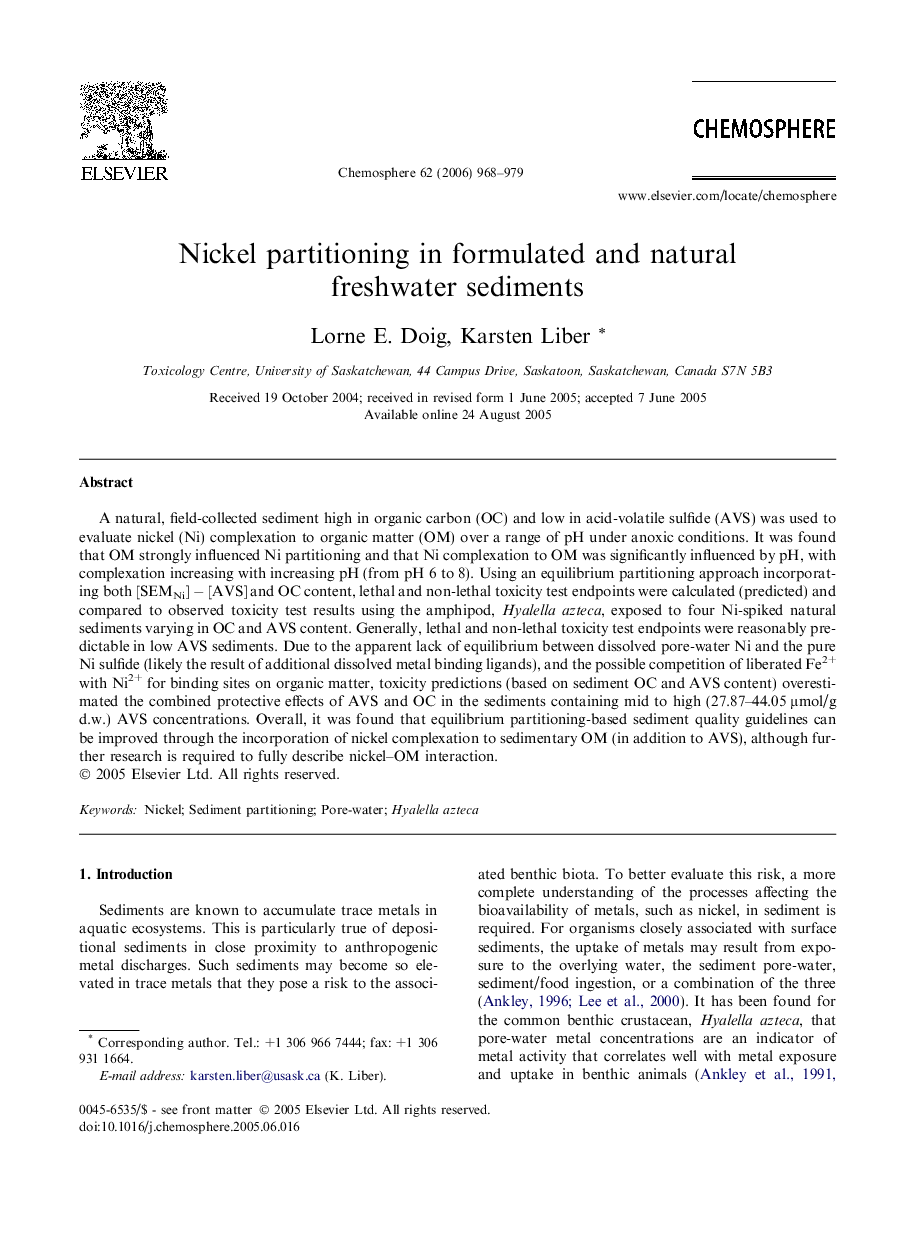| Article ID | Journal | Published Year | Pages | File Type |
|---|---|---|---|---|
| 4416950 | Chemosphere | 2006 | 12 Pages |
A natural, field-collected sediment high in organic carbon (OC) and low in acid-volatile sulfide (AVS) was used to evaluate nickel (Ni) complexation to organic matter (OM) over a range of pH under anoxic conditions. It was found that OM strongly influenced Ni partitioning and that Ni complexation to OM was significantly influenced by pH, with complexation increasing with increasing pH (from pH 6 to 8). Using an equilibrium partitioning approach incorporating both [SEMNi] − [AVS] and OC content, lethal and non-lethal toxicity test endpoints were calculated (predicted) and compared to observed toxicity test results using the amphipod, Hyalella azteca, exposed to four Ni-spiked natural sediments varying in OC and AVS content. Generally, lethal and non-lethal toxicity test endpoints were reasonably predictable in low AVS sediments. Due to the apparent lack of equilibrium between dissolved pore-water Ni and the pure Ni sulfide (likely the result of additional dissolved metal binding ligands), and the possible competition of liberated Fe2+ with Ni2+ for binding sites on organic matter, toxicity predictions (based on sediment OC and AVS content) overestimated the combined protective effects of AVS and OC in the sediments containing mid to high (27.87–44.05 μmol/g d.w.) AVS concentrations. Overall, it was found that equilibrium partitioning-based sediment quality guidelines can be improved through the incorporation of nickel complexation to sedimentary OM (in addition to AVS), although further research is required to fully describe nickel–OM interaction.
